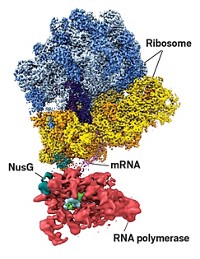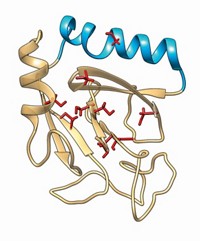Advertisement
Grab your lab coat. Let's get started
Welcome!
Welcome!
Create an account below to get 6 C&EN articles per month, receive newsletters and more - all free.
It seems this is your first time logging in online. Please enter the following information to continue.
As an ACS member you automatically get access to this site. All we need is few more details to create your reading experience.
Not you? Sign in with a different account.
Not you? Sign in with a different account.
ERROR 1
ERROR 1
ERROR 2
ERROR 2
ERROR 2
ERROR 2
ERROR 2
Password and Confirm password must match.
If you have an ACS member number, please enter it here so we can link this account to your membership. (optional)
ERROR 2
ACS values your privacy. By submitting your information, you are gaining access to C&EN and subscribing to our weekly newsletter. We use the information you provide to make your reading experience better, and we will never sell your data to third party members.
Biological Chemistry
ACS Meeting News: Hepatitis B virus protein contains unusual iron-sulfur cluster
by Jyllian Kemsley
April 5, 2017

Credit: Maria Eirini Pandelia/Brandeis U
In a step toward understanding how the hepatitis B virus (HBV) replicates and causes infection, a research team has determined that one of the virus’s four proteins may incorporate a unique iron-sulfur cluster. Team leader Maria Eirini Pandelia of Brandeis University reported this discovery on Tuesday at the American Chemical Society national meeting in San Francisco.
The protein, known simply as X, is only 154 amino acids long and is the least understood of the HBV proteins. HBV infects the liver and can cause short-term and chronic illness.
Biochemists know that X interacts with a number of proteins in host cells and that it plays a role in virus infectivity, replication, and ultimately cancer formation. However, the protein’s structure and mechanism have remained elusive.
Pandelia’s team started investigating X last year, after work by another group indicated that the protein incorporates iron. Elemental and spectroscopic analysis by Pandelia and colleagues show that the protein contains a [2Fe2S] cluster when isolated in the presence of oxygen. When reduced, the cluster converts to [4Fe4S], although exactly how the conversion occurs is unclear.
Other proteins known to interconvert between forms containing [2Fe2S] and [4Fe4S] play roles in iron-sulfur cluster assembly and gene transcription regulation
Research keeps revealing more about the diversity and importance of iron-sulfur clusters in biological chemistry, commented one of the symposium organizers, Joshua Telser of Roosevelt University. “It’s never-ending.”
Related stories:





Join the conversation
Contact the reporter
Submit a Letter to the Editor for publication
Engage with us on Twitter